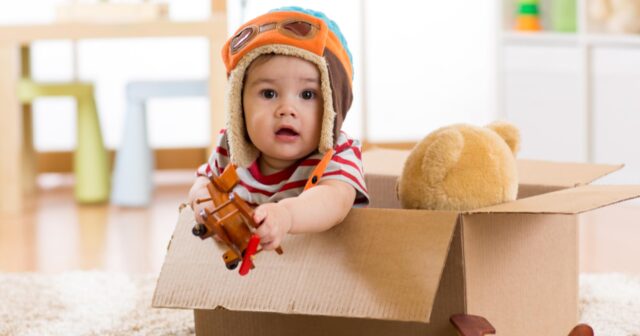
Whilst it is common knowledge that moving to a new home can be a stressful experience for adults, only a few consider that the experience can also be stressful for children. Because of such assumptions, many parents only inform their children about the upcoming change just a few weeks before the scheduled moving day. This gives children too little time for the children to process the information and prepare themselves for the transition.
Whether you’re moving on your own or you’re hiring professional removalists to assist you with your move, you need to make an extra effort to help prepare your children for your new home. You can visit their website to learn more or read the tips below on how you can make relocation a positive experience for the young ones.
1. Communicate Early

If you are planning on moving with the entire family, it is important to discuss the idea with your children as soon as possible. Whilst the information you can share will depend on their age, communicating with them about your plans will help a lot in normalising the changes that will occur on the days leading to your moving day.
During the conversation, explain why the move is necessary and how everyone will benefit from the move. Be mindful of their reactions and take breaks when necessary so they won’t be overwhelmed by the new information. When possible, ask them how they feel about the move and offer assurance when needed.
2. Involve them in the process
As much as possible, get the children involved when making decisions for the move.
You can ask them to join you as you look for properties online or when visiting properties with your agent. Once you have a short list of properties that you will consider for the move, you can ask for their insight about the properties. For example, get their input on which property made them feel the most comfortable or what they liked or disliked the most about certain properties.
Whilst this will be a lot of information to process, it will give you a better idea of what compromise you’ll need to make during and after the move. Although the importance of their input will differ, involving everyone in the process will help the children feel more connected to the new home, as well as manage their expectations upon moving.
3. Visit the new neighbourhood

Take the children with you when you visit the location of your new home before the move. When possible, take some time to explore the neighbourhood and locate nearby parks, schools, and other essential amenities. This is also a good opportunity to figure out the best ways to move around the area to reach certain destinations. If the location of your new home is close to your current residence, consider visiting the new neighbourhood often to help children become more familiar and comfortable in the new environment.
4. Create a floor plan
When possible, share the floor plan of your new home with your children. Let them visualise and help plan the layout of their new room. Whilst these extra steps may require more time and effort, doing these will help the children feel more in charge of the changes happening around them. It can also lessen the anxiety and make moving to a new home a positive experience for them.
Depending on the age of your children, their contribution to the decision-making process might be limited. You can let them choose the colour and decorations for their rooms. If you’re looking into buying new furniture for them, provide them with options that are within your budget and let them choose the items they prefer.
5. Declutter and organise

It is highly recommended that you start decluttering and organising your belongings as soon as possible. Let your children be responsible for decluttering their respective rooms or getting rid of toys and other items they no longer want or need. To make the process easier, you can set up containers where they can put the items they no longer want. Organise the remaining items that must be packed together to make it easier to pack these items into a labelled box or container.
In some cases, it might be difficult for your children to let go of some items. You can use this as an opportunity to teach them the importance of letting go of things that they no longer want or use.
6. Pack together
Encourage your children to organise and pack their belongings for the move. You can provide them with their own suitcases or boxes that they can label and decorate. Same as above, let them start packing non-essential as early as possible to make sure they have enough time to pack items at a suitable pace without delaying other aspects of the move. Provide a separate box or bag for essential items that will be packed a day before or on your moving day.
7. Maintain routines

It is highly recommended that you maintain your children’s routine throughout the moving process. It might be challenging, especially with the additional tasks that you have to perform, but maintaining consistency in daily activities will provide your children with a sense of stability. No matter how hectic your schedule gets, be sure to observe usual mealtimes, extracurricular activities, and even bedtime routines.
8. Address emotional needs
Moving to a new home is an emotional experience for children. With several unfamiliar things happening around them, your children might feel stressed or overwhelmed by the changes. Find time to communicate with them and allow them to express how they feel about certain things and address their concerns without invalidating their emotion. Comfort them as needed and provide reassurance by emphasising the positive aspects of moving to your new home and how the move is a good opportunity for the whole family.
9. Familiarise yourself with the new home

Once you arrive in your new home, take some time to explore the entire property together. Forget about the unpacked items for a few minutes and give the kids a little tour. Show them their rooms and the layout of the house, explaining how things work. Encourage the young ones to ask questions and express their opinion about the different aspects of the home. If there are aspects of the new home that are similar to your previous residence, consider using these as a point of comparison and provide familiarity.
10. Decorate and personalise
As mentioned above, get the children involved in decorating their rooms. Depending on your budget, consider letting them choose the colours, artwork, decorations, and accessories that reflect their individual personalities and interests. This allows them to have some sense of control and develop feelings of familiarity and belonging in their new space.
11. Encourage new friendships

Whether it’s in their new school or the neighborhood, help your children build new connections by encouraging them to join local activities, clubs, and sports. If you have friends or acquaintances who live nearby and have children, consider organising playdates or participating in events where you can introduce them to other children in the area. It can be challenging at first, but building new connections and making new friends will help them feel more integrated into the community.
Although moving is stressful for adults and children alike, keep in mind each child will have a different reaction to the changes happening around them. The move may be tough and stressful for you too, but be patient, understanding, and supportive throughout the process.









